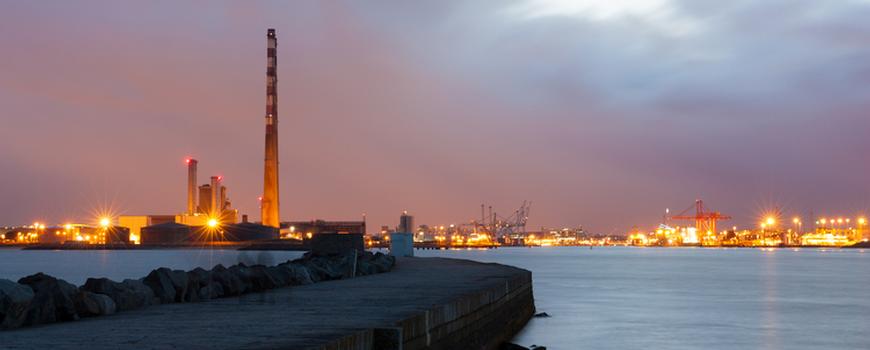
In recent years, Dublin Port Company has recorded significant business growth and has sought to explore options to develop its business and capitalise on improving economic conditions.
A large portion of the Port's land bank is dedicated to importing, storing and distributing petroleum products. The Company wanted to evaluate options for the long-term development of this land, as part of its masterplan over the period to 2040. It engaged Byrne Ó Cléirigh, in association with CEI Collins Engineers and Wood Group Kenny, to advise it on the feasibility of moving four existing oil jetties from the north side of the River Liffey to the south side of the river.
Our feasibility study included the following elements:
- Forecasting the likely mix of petroleum products and the level of demand for those products over the period to 2040.
- Determining configurations of import parcel sizes, jetties and pipelines that would allow the Port to best handle the forecast product mix and the level of demand.
- Developing a high-level design for new, larger oil jetties, which would operate in an environmentally sensitive area.
- Developing a high-level pipeline design to connect the new jetties to the existing storage infrastructure on the opposite side of the river.
- Cost estimation.
- Cost benefit analysis.
Our study provided Dublin Port Company with a comprehensive assessment of the oil importation, storage and distribution supply chain in Ireland, at the time of our assessment and into the future. It analysed how future developments could impact on the Port’s throughput and identified infrastructural investments that could capitalise on oil supply chain opportunities, while creating or enhancing options for other business activities at the Port.
Byrne Ó Cléirigh had overall responsibility for the delivery of the assignment, the output from which will inform the Port's decision making as it implements its masterplan to 2040.
